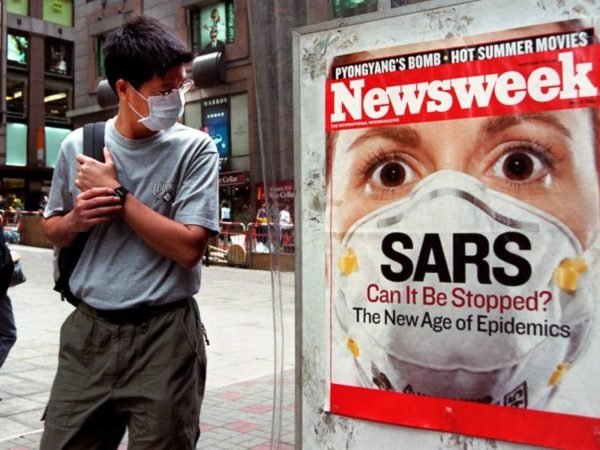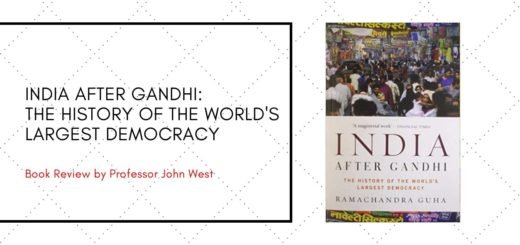Changing History of Coronavirus Diseases, 2003-2019

A pneumonia outbreak reported in Wuhan, China, on 31 December 2019, it was traced to a novel strain of coronavirus, which was given the interim name 2019-nCoV by the World Health Organization (WHO), later renamed SARS-CoV-2 by the International Committee on Taxonomy of Viruses. As of 6 April 2020, there have been over 70 thousand confirmed deaths and more than 13 lakhs confirmed cases in the coronavirus pneumonia pandemic. The Wuhan strain has been identified as a new strain of Betacoronavirus from group 2B with approximately 70% genetic similarity to the SARS-CoV. The virus has a 96% similarity to a bat coronavirus, so it is widely suspected to originate from bats as well. The pandemic has resulted in travel restrictions and nationwide lockdowns in several countries. Scientists and medical researchers have for years have differed over the exact definition of a pandemic -is it a pandemic, or an epidemic, but one thing everyone agrees on is that the word describes the widespread occurrence of disease, in excess of what might normally be expected in a geographical region. Cholera, bubonic plague, smallpox, and influenza are some of the most brutal killers in human history. And outbreaks of these diseases across international borders, are properly defined as a pandemic, especially smallpox, which throughout history, has killed between 300-500 million people in its 12,000-year existence.

A short history of Corona 19 -like viral diseases
In 2003, following the outbreak of severe acute respiratory syndrome (SARS) which had begun the prior year in Asia, and secondary cases elsewhere in the world, the World Health Organization (WHO) issued a press release stating that a novel coronavirus identified by a number of laboratories was the causative agent for SARS. The virus was officially named the SARS coronavirus (SARS-CoV). More than 8,000 people were infected, about ten percent of whom died. It followed in September 2012, a new type of coronavirus was identified, initially called Novel Coronavirus 2012, and now officially named Middle East respiratory syndrome coronavirus (MERS-CoV). The World Health Organization issued a global alert soon after. The WHO update on 28 September 2012 said the virus did not seem to pass easily from person to person. However, on 12 May 2013, a case of human-to-human transmission in France was confirmed by the French Ministry of Social Affairs and Health. In addition, cases of human-to-human transmission were reported by the Ministry of Health in Tunisia. Two confirmed cases involved people who seemed to have caught the disease from their late father, who became ill after a visit to Qatar and Saudi Arabia. Despite this, it appears the virus had trouble spreading from human to human, as most individuals who are infected do not transmit the virus. By 30 October 2013, there were 124 cases and 52 deaths in Saudi Arabia. After the Dutch Erasmus Medical Centre sequenced the virus, the virus was given a new name, Human Coronavirus—Erasmus Medical Centre (HCoV-EMC). The final name for the virus is Middle East respiratory syndrome coronavirus (MERS-CoV). The only U.S. cases (both survived) were recorded in May 2014.

Recent coronavirus outbreaks
In May 2015, an outbreak of MERS-CoV occurred in the Republic of Korea, when a man who had travelled to the Middle East, visited four hospitals in the Seoul area to treat his illness. This caused one of the largest outbreaks of MERS-CoV outside the Middle East. As of December 2019, 2,468 cases of MERS-CoV infection had been confirmed by laboratory tests, 851 of which were fatal, a mortality rate of approximately 34.5%. Beginning in December 2019 in Wuhan, China, new coronavirus spreads incredibly quickly between people, due to its newness. No one on earth has immunity to COVID-19, because no one had COVID-19 until 2019. While it was initially seen to be an epidemic in China, the virus spread worldwide within months. The WHO declared COVID-19 a pandemic in March, and by the end of that month, the world saw more than a half-million people infected and nearly 30,000 deaths. The infection rate in the US and other nations was still spiking. With the coronavirus pandemic, people all over the world have become more aware of the best practices during a pandemic, from careful hand-washing to social distancing. Countries across the world declared mandatory stay-at-home measures, closing schools, businesses, and public places. Dozens of companies and many more independent researchers began working on tests, treatments, and vaccines. The push for the human race to survive the pandemic became the primary concern in the world. The outcome of the COVID-19 pandemic is impossible to predict, at the time of this writing. But we can learn from pandemics in history to determine our best courses. These are our teachers – the Spanish flu, the AIDS pandemic, and more.

Spread and containment policy in India
As per the document of the Indian Health Ministry, the geographic distribution of COVID-19 mimics the distribution of H1N1 pandemic influenza, which suggests that while the spread of COVID-19 in the population could be high, it’s unlikely that it will uniformly affect all parts of the country. This calls for a differential approach to different regions of the country while mounting a strong containment effort in hotspots. In the context, the Mathematical modelling of China has suggested that containment might be possible especially when other public health interventions are combined with an effective social distancing strategy. At all times doctors, nurses and paramedics working in clinical areas will wear three-layered surgical mask and gloves. As of 6 April 2020 one hundred and nine people have died in India after being infected with COVID-19, and the country recorded 472 cases in last 24 hours that takes the total to more than 4 thousand. India recorded the highest number of cases,601 and deaths, 12 on Friday amid an unprecedented surge in the COVID-19 count over the last week linked to a controversial religious gathering in Delhi.
The nation went under lockdown on March 25 to break the chain of transmission and the Health Ministry has released an aggressive containment plan for large outbreaks of COVID-19, which includes buffer zones and sealing off areas for nearly a month. The government made the containment plan after clusters posing a high risk of further spread of COVID-19 emerged in several states. The strategy is meant to contain the highly contagious disease caused by a novel coronavirus. It is aimed to define a geographical area by early detection of cases, breaking the chain of transmission and thus preventing its spread to new areas. A novel virus is one that has not been previously identified in humans. So far 274 districts have reported COVID-19 cases, an increase of three-fold since March 22, which led the government to come up with this containment plan. Under the scheme, all suspected and confirmed COVID-19 cases will be hospitalised and kept in isolation in hospitals dedicated to fighting the coronavirus. Patients will be discharged only if two samples test negative for coronavirus. Those with mild symptoms will be quarantined in stadiums, those having moderate symptoms will be admitted to hospitals meant for COVID-19 care, and those with severe symptoms will be sent to tertiary or advanced hospitals. Another step mentioned in the strategy is the closure of schools, colleges and offices in containment and buffer zones. There will be no public and private transport in these areas. Only essential services will be allowed to move. The containment plan will be eased if no COVID-19 cases are reported from the quarantine zone for at least four weeks after the last confirmed test.


















